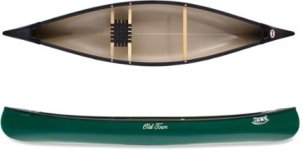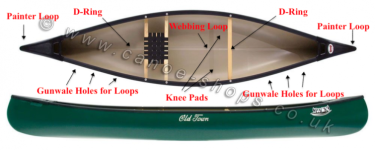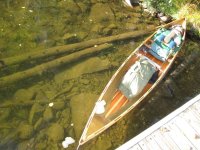Hi, All.
Before I begin, I will say that I've done my homework, and I know people are split over whether you can/should solo trip in the OT Pack or not....so I'm hoping to avoid regurgitating that "discussion" here. For better or for worse, I recently came into possession of an OT Pack, and it is the only solo canoe we own. We do not have the money at the moment to buy any of the other solo canoes we hope to own one day, so if we can keep this discussion to the OT Pack, that would be awesome!
For better or for worse, I recently came into possession of an OT Pack, and it is the only solo canoe we own. We do not have the money at the moment to buy any of the other solo canoes we hope to own one day, so if we can keep this discussion to the OT Pack, that would be awesome!
So, if you own an OT Pack how have you outfitted it for tripping? If you do not own an OT Pack but want to play along, how would you outfit it for tripping? It came with both the standard seat and the OT Angler Seat.
Dropping the seat seems the most obvious first step. I've read that some people have also moved it forward a few inches. I've read that others have added a kneeling thwart. Still others have added foot pegs. Then there are those who use an adhesive backed seat on the hull. What have you done/would you do with the seating on an OT Pack for tripping?
I'm thinking a 250cm double bladed paddle and a standard paddle.
Next, some people have added permanent carry yoke, while others have used a clamp on carry yoke. I know people have moved the thwart location, and those who have removed either OT seat have added a rear thwart. Thoughts?
Finally, in terms of gear configuration (and tie downs for Class I/II), any thoughts? A few well-placed d-rings?
Any other thoughts?
Thanks in advance!

Before I begin, I will say that I've done my homework, and I know people are split over whether you can/should solo trip in the OT Pack or not....so I'm hoping to avoid regurgitating that "discussion" here.
So, if you own an OT Pack how have you outfitted it for tripping? If you do not own an OT Pack but want to play along, how would you outfit it for tripping? It came with both the standard seat and the OT Angler Seat.
Dropping the seat seems the most obvious first step. I've read that some people have also moved it forward a few inches. I've read that others have added a kneeling thwart. Still others have added foot pegs. Then there are those who use an adhesive backed seat on the hull. What have you done/would you do with the seating on an OT Pack for tripping?
I'm thinking a 250cm double bladed paddle and a standard paddle.
Next, some people have added permanent carry yoke, while others have used a clamp on carry yoke. I know people have moved the thwart location, and those who have removed either OT seat have added a rear thwart. Thoughts?
Finally, in terms of gear configuration (and tie downs for Class I/II), any thoughts? A few well-placed d-rings?
Any other thoughts?
Thanks in advance!




